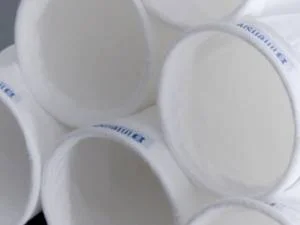What Are Mechanical Dust Collectors?
Mechanical dust collectors are machines used in industrial settings. They help keep the air clean by removing dust particles from the air. This is important for the health of workers and the environment. Mechanical dust collectors work by using different methods to separate dust from gas streams.
They do this using mechanical methods like:
- Centrifugal force: This method spins the air to push heavier dust particles to the outside. The dust collects in a container.
- Gravity settling: In this method, the air moves slowly. Dust particles fall to the bottom of the collector because of gravity.
- Inertia: This method takes advantage of the fact that dust particles want to keep moving. When the air changes direction, the dust particles hit the walls and get trapped.
Mechanical dust collectors play a key role in industries. They help improve air quality and protect equipment from dust damage.
Types of Mechanical Dust Collectors
Mechanical dust collectors help clean the air. They catch dust and particles from the air in different ways. There are several types of mechanical dust collectors. Some common types are cyclone dust collectors, multi-cyclone dust collectors, and wet dust collectors. Each type has its own way of working and different uses.
- Cyclone Dust Collectors: Cyclone dust collectors use a spinning motion to remove dust. They look like a big cone. When air enters the cone, it spins around. The spinning motion pushes dust to the outer wall. The dust then falls into a container at the bottom.
- Operating Principle: Air spins in a cone shape. Dust moves outward and falls down.
- Advantages: They are simple, need little maintenance, and work well for larger particles.
- Suitable Applications: Factories, woodworking shops, and places with a lot of dust.
- Multi-Cyclone Dust Collectors: Multi-cyclone dust collectors work like cyclone dust collectors but have several cones. This helps them catch more dust at once. They are often used where there is a lot of dust to control.
- Operating Principle: Air spins in multiple cones at the same time, removing more dust.
- Advantages: They have high dust collection efficiency and can handle larger volumes of air.
- Suitable Applications: Industries with high dust loads, like metal processing and food production.
- Wet Dust Collectors: Wet dust collectors use water to trap dust. They spray water into the air. The water droplets catch dust and particles, making the air cleaner. This type is good for very fine dust.
- Operating Principle: Water sprays into the air, trapping dust in the droplets.
- Advantages: They control dust very well and reduce fire hazards.
- Suitable Applications: Metalworking, welding, and places where fine dust is produced.
Each type of mechanical dust collector has its uses. They help keep the air clean and safe in different environments. People choose the right type based on their needs.
Boiler Dust Collectors
Boiler dust collectors are very important in boiler systems. They help keep the boiler clean by stopping dust and small particles from getting inside. This keeps the boiler working well and helps it last longer.
Here are some benefits of using dust collectors in boiler systems:
- بهره وری بهبود یافته: Dust collectors help the boiler run better. When there are fewer particles inside, the boiler can produce heat more effectively.
- Longer Equipment Life: Dust can damage the parts of the boiler. Dust collectors reduce wear and tear, making the equipment last longer.
- کیفیت هوای بهتر: Dust collectors trap harmful particles. This helps to keep the air cleaner, which is good for people and the environment.
- کاهش تعمیر و نگهداری: With a dust collector, there is less buildup of dirt and dust. This means less cleaning is needed, saving time and money.
- Compliance with Regulations: Many places have rules about air quality. Dust collectors help boiler systems meet these rules.
Considerations for using dust collectors include:
- Initial Cost: Buying a dust collector can be expensive. However, it often saves money in the long run by improving efficiency and reducing repairs.
- Space Requirements: Dust collectors need space. Make sure there is enough room in the boiler area for the equipment.
- نیازهای تعمیر و نگهداری: Dust collectors need regular checks and cleaning. This is necessary to keep them working properly.
Boiler dust collectors play a key role in keeping boiler systems efficient and safe. They help to manage dust and particles effectively.
Factors to Consider When Choosing a Mechanical Dust Collector
When choosing a mechanical dust collector, several factors are important. These factors help ensure the collector works well for specific needs. Here are the key factors to consider:
- ویژگی های گرد و غبار: Dust characteristics include the type, size, and shape of the dust particles. Different dust types can behave differently. It is important to know if the dust is dry or wet and if it is hazardous. This helps in selecting the right collector.
- Gas Volume: Gas volume refers to the amount of air that needs to be cleaned. A collector must handle the volume of air produced in the space. Calculating the airflow helps to choose a dust collector that can manage the required gas flow efficiently.
- دما: Temperature is another important factor. Some dust collectors can only work within certain temperature ranges. High temperatures can affect the collector’s performance and lifespan. It is crucial to check the temperature of the air and dust and choose a collector that can handle these conditions.
- Pressure: Pressure refers to the resistance to airflow in the system. High pressure can affect how well the dust collector works. Selecting a collector that matches the system’s pressure requirements ensures it operates effectively without losing efficiency.
- Regulatory Requirements: Regulatory requirements are rules set by government bodies. These rules ensure safety and environmental protection. It is important to know the local regulations about dust collection. Choosing a dust collector that meets these requirements helps avoid fines and ensures safety in the workplace.
Maintenance and Optimization of Mechanical Dust Collectors
Mechanical dust collectors help keep workspaces clean by removing dust and debris. To ensure they work well, regular maintenance and optimization are important. Here are some guidelines to help with that.
- بازرسی های منظم:
- Check the dust collector at least once a month.
- Look for any wear or damage in parts like filters and fans.
- Listen for unusual noises when the machine operates.
- فیلترها را تمیز کنید:
- Clean filters regularly to ensure air flows freely.
- Replace filters if they are too dirty or damaged.
- Use compressed air to blow out dust if filters are reusable.
- انسداد را بررسی کنید:
- Inspect ducts and pipes for any clogs.
- Clear any blockages to maintain proper airflow.
- Make sure all connections are tight and secure.
- نظارت بر عملکرد:
- Keep track of how well the dust collector works.
- Use pressure gauges to check airflow.
- Note any drops in performance and address them quickly.
- روغن کاری قطعات متحرک:
- Apply lubricant to fans and motors as needed.
- Check the manufacturer’s guidelines for the right type of lubricant.
- Regular lubrication helps prevent wear and tear.
- Train Operators:
- Make sure everyone who uses the dust collector knows how it works.
- Teach them how to spot problems early.
- Encourage proper use to avoid unnecessary damage.
- Plan for Repairs:
- Keep spare parts on hand for quick fixes.
- Schedule regular professional maintenance checks.
- Address small issues before they become big problems.
By following these steps, mechanical dust collectors can perform well for a long time. Regular care helps avoid common issues and ensures a clean and safe work environment.
Innovations in Mechanical Dust Collection Technology
Mechanical dust collection technology has seen many recent advancements. These improvements make dust collection more efficient and effective. Energy-efficient designs help save power. Noise reduction features make machines quieter. Integration with automation systems allows for better control and monitoring.
One major change is the use of energy-efficient designs. Modern dust collectors use less electricity while still working well. This helps businesses save money on energy costs.
Noise reduction features are also important. New dust collection systems are quieter than older ones. This makes the work environment more pleasant. Workers can focus better without loud machines interrupting them.
Integration with automation systems is another big step forward. Many new dust collectors can connect to smart systems. This allows for automatic adjustments and monitoring. Users can track dust levels and system performance easily.
Here is a table that shows the differences between traditional and modern dust collection technologies:
| ویژگی | Traditional Dust Collectors | Modern Dust Collectors |
| بهره وری انرژی | پایین | بالا |
| سطح نویز | با صدای بلند | Quiet |
| Automation Integration | None | بله |
| نیازهای تعمیر و نگهداری | بالا | پایین |
| Dust Collection Efficiency | متوسط | بالا |
These innovations in mechanical dust collection technology make a big difference in how dust is managed in various settings.
Case Study: Successful Implementation of Mechanical Dust Collectors
In a busy manufacturing plant, the company struggled with dust from its production process. The dust created a messy environment and caused health issues for workers. The company decided to install mechanical dust collectors to solve these problems.
- Challenges: The company faced several challenges before installing the dust collectors. First, the dust levels were too high, which was unsafe for workers. Second, the dust affected the quality of their products. Lastly, cleaning the plant took too much time and effort.
- Solutions: To tackle these challenges, the company worked with experts in dust collection systems. They installed mechanical dust collectors that worked effectively for their needs. The dust collectors used fans to pull air through filters. This process captured dust and kept the air clean. The team also trained workers on how to use and maintain the new system.
- Results: After the installation, the company saw many benefits. The air quality improved greatly, making it safer for employees. Workers reported feeling healthier and more comfortable. The dust collectors also reduced the cleaning time, allowing employees to focus on their jobs.
Finally, the quality of the products improved, leading to higher customer satisfaction.
نتیجه گیری
Selecting the right mechanical dust collector is very important for efficient filtration. A good dust collector helps keep the air clean and makes work safer. Companies like Intensiv Filter Himenviro provide sustainable and efficient solutions. They offer products that help businesses meet their needs while protecting the environment.
When choosing a mechanical dust collector, readers should think about the size, type of dust, and airflow. These factors can greatly affect how well the collector works. It is important to make an informed decision to ensure the best results.
Readers should consider these points when looking for a mechanical dust collector. Making the right choice can lead to better air quality and a healthier workplace.



